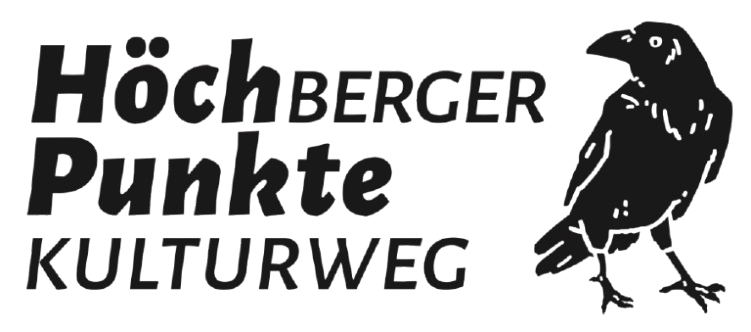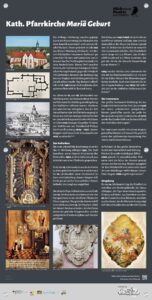Catholic parish church of the Nativity of the Virgin Mary
Höchberg’s beginnings were characterized by the missionary work in the Main valley by the Benedictine monk and later Bishop Burkard. In the year 742, he founded the diocese of Würzburg (Virteburh), with the churches and lands donated by the Frankish Hausmeier Karlmann, including the village of Karlburg near Karlstadt with the monastery of St Mary. This village was exchanged by Immina, the daughter of the Thuringian-Franconian Duke Hetan II, for Virteburh with lands, including the settlement of Hugbur. Hugbur, as Höchberg was first historically recorded, was finally added by Burkard to his Andreas Monastery, the later Knights’ Abbey of St Burkard, in 748.
In the 17th and 18th centuries in particular, Höchberg was one of the most important Marian pilgrimage sites for Würzburg and the surrounding area. The pilgrims donated candles, wax votives and silver votive offerings. Today, only one votive image from the time of the emerging pilgrimage movement remains, which bears witness to the healing of a blind girl in 1704.
Prince-Bishop Philipp Adolf von Ehrenberg (1623 – 1631) was a great patron of pilgrimages, whose coat of arms can still be seen in the Chapel of the Cross from 1627. 5, 6
The exterior
The first documented mention of a church in Höchberg dates back to 1355, when the villagers were subjects of the knights’ monastery. In 1363, the feudal register explicitly mentions a branch church.
At the end of the 15th century, the church was extended into a Gothic hall church and the nave was enlarged in the 17th century under Prince-Bishop Johann von Guttenberg, whose coat of arms can still be seen on the gable of the southern portal.
The three-nave hall church was built at the end of the 15th century and the four tower storeys were added to the northern flank of the choir. The Gothic nave, presumably from the 13th century, was retained in this new building. As in the east, the Gothic polygonal choir and the late Gothic extension were orientated towards the west.
The extension of 1907/1908 is a credit to Pastor Valentin Hußlein, to whom a memorial plaque on the wall in the west is dedicated. Since then, the church has remained essentially unchanged. The chancel retained its length of 12.5 metres, while the nave was extended to 31.5 metres, giving the church its current total length of 44 metres.1, 3
In 1963, relics of a stone church with foundations measuring 6 x 7 metres and
80 cm thick walls were discovered during renovation work. A memorial plaque, commemorating the combatants of 1870 / 71, can also be found on the southern outer wall of the church.2
The interior
Höchberg’s greatest work of art is the miraculous image of Mary with her Child, that was created around 1470 by an unknown late Gothic master. In the course of new refurbishing the interior from 1770, the miraculous picture was moved from the side aisle to the high altar. 4
With its recessed flat ceilings in the choir and nave and the late Baroque furnishings as well, the interior radiates harmony and serenity.
The large ceiling fresco with the Assumption and Coronation of Mary is striking. It was painted by Eulogius Böhler in 1908. Painted in perspective of the apostles grouped around Mary’s empty coffin. The central nave is dominated by the pulpit made by the Würzburg court sculptor Johann Peter Wagner in 1786.7
Surroundings
Until the 19th century, the cemetery was located directly next to the church building. A crucifix, the figure of a cross-bearing Christ on his knees, made of sandstone from the18th century and a wayside shrine, also made of sandstone, depicting the coronation of the Virgin Mary are also located on the church square.

